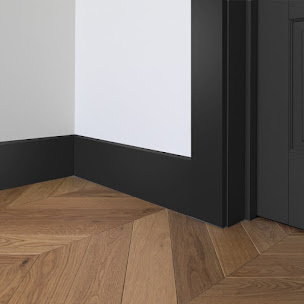Composite Decking Tiles: A Quick Solution for Outdoor Makeovers
Sleek, sturdy and simple to install, Decking Tiles are a wonderful means of revamping your outdoor living area. If you have an existing concrete patio that is starting to crack, do not worry, there is no need to re-do it simply cover it up by putting our stylish deck tiles over the concrete.
Composite decking tiles are truly fantastic-looking, low maintenance, and a breeze to fit yourself. If you would prefer a new decking area but lack the time and/or finances, our composite tiles will be perfect for your garden.
Our self-fitting deck tiles have a new polymer finish which resists ultra-violet (UV) light, water, mold, and insects. Each deck tile has a grid at the base for immediate water run-off. This means that these easy-lay, fully waterproof decking tiles will last longer
Deck Tile Uses
Ideal for an instant makeover of your back garden, you can utilize our composite decking tiles for:
- Courtyards
- Backyards
- Balconies
- Patios
- Pools
If your exterior space is starting to show its years with cracks, stains and uneven or raised joints, then the time to act may be now. Not only is cracked concrete unsightly — it could be hazardous, too.
But as it takes a long time to replace a concrete surface and is costly, you might not be so keen on replacing it. But do not worry, you do not necessarily have to, since composite deck tiles are a cheap, trendy and simple-to-fit way of covering them up with. These kinds of tiles can be installed over numerous types of outside surfaces, change their appearance and prolong their life.
Some of the problems that uncapped composite decking has are listed below:
Fading: Fading colors on non-slip Composite Decking Tiles are a result of the quality of the wood fiber composition. Wood will fade over time if it is exposed, and some manufacturers have poor production techniques that expose the fibers on the surface. When there is unsymmetrical fading, it is because the manufacturer cannot control the consistencies of the raw materials and the colorant properly.
Scratching: Sanded or brushed composite decking is notoriously easy to scratch, in part due to the wood fibers in the material. When they brush or sand the composite boards, they are wearing down the surface, making it even less scratch-resistant.
Crumbling: As non-caped composite boards are exposed to water and UV, they begin to deteriorate because the inappropriate ratio of bonding agent and antioxidant has been mixed. Water and UV are absorbed simultaneously by the wood fiber, and hence crumbling, rotting and weakening of the board results due to decomposition. Non-capped composite decking is extremely simple to scratch after this weathering has been begun even with your fingernail.
Mildew, mold and fungus: These are typically encountered in very humid locations.
Cracking: Companies typically put filler or calcium into their boards with the hope of making the board stronger, but in the process, the board is weakened and more prone to cracking. Due to this, cracking of this product can be attained in its installation.




Comments
Post a Comment